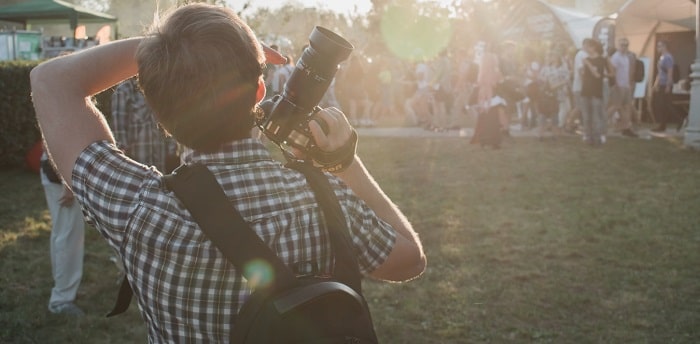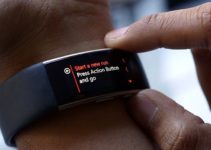The old-fashioned stereotype of journalism is smoke-filled offices where Bob Woodward scoops the story of Watergate, or the local newspaper hack, talking late at night to a barman about the story he is trying to break.

That’s just not how life is anymore. We now live in the age of the ‘citizen journalist’. The Citizen Journalist isn’t a full-time professional but rather someone (or some group) that creates news, current affairs, or documentary content for YouTube or other delivery platforms.
Today, anyone with a story to tell and a Smartphone can – in theory anyway – reach everyone else on the planet with a great scoop. That is anyone who speaks their language and assuming they really do have an interesting enough story to tell. That might be you.
However, maybe you sometimes don’t even need a story. If a citizen journalist has some great looking images, they don’t even need a common language. An avalanche in progress, a roller- skating cat, or a tornado shot from your hotel room in in Kansas, doesn’t need much explaining and will do the trick.
That also means almost anyone can publish Journalistic – style videos on YouTube and other platforms. You can, for example. You don’t need to be Clark Kent at the Daily Planet. Not just skateboarding ducks, but real stories on absolutely anything. These can include local or national topics, travelogues, product reviews, or promotional pieces for their company, organization or club. That’s just a few examples of citizen journalism.
A picture is indeed worth a thousand words and a moving picture is more powerful again, The older forms of Media – Print, TV and Radio, were locked into the limitations of their delivery formats.
Now, the combination of the Internet and smartphones mean words, pictures, moving images and sound are all at the fingertips of you, the storyteller.
However, you will start to find the limits to what a Smartphone can do as a storytelling tool. Even the fanciest smartphones. This topic is dealt with thoroughly in this article on best cameras for interviews.
Limitations of Mobile Phones
- The lenses of even high-end smartphones can’t always match the full capacities of a true high-quality detachable camera lens arrangement, with multiple lens choices. That limits what you can do with the images.
- The microphones on smartphones can’t match the audio separation, resistance to wind noise or overall sound quality of independent high – quality professional microphones. If you don’t believe me, why don’t you try interviewing a group of people with a single mobile phone and see what audio separation of multiple interviewees voices you get
- Professional camera crews often move the camera while shooting. They use camera dollies or sophisticated tripods or Steadicam rigs to do that. That kind of movement is a lot trickier with a mobile phone. Note that mobile phone stabilizers can reduce the quality of a picture.
Of course, mobile phone technology has made amazing steps in image capture and processing in recent years. Mobile phone fans might read this article and think ‘hey but my phone is so good these days, why do I need a camera?’.
This misses the point that cameras are getting better too and that there are fundamental limitations in the phone physical format.
So, these three limitations of your mobile phone – lenses, audio, and ergonomics, continue to be important. Some people make a second income out of being a citizen journalist, or at least it is a paid hobby. Why not you?
This is not just about YouTube, TV News stations will pay you good money for good content. So, these citizen journalists go out properly equipped for shooting at better quality than just with a phone. Remember, having a camera doesn’t stop you from taking a phone too.
They can – and do – make good money. If your talkative elderly taxi driver in Miami, turns out to be Elvis in disguise, that’s worth big bucks. If you are camping up in Yosemite and Bigfoot comes up to the tent, asks to borrow your copy of the National Enquirer, you’ll be on to a good thing.
These are examples of possible scoops. But it’s also the case you may be involved in something pre-planned. Maybe you are trying to get publicity for a local, national or international issue, and you want to make your case with a video.
That’s why professional, or even prosumer cameras are a better solution than a phone.
Why picture and sound quality matters
Citizen journalists need to understand why good picture and sound quality helps them get views and get their point across.
First, the better the quality of the video, the more likely it will be to keep viewers watching.
Remember on the web, you are trying to stand out like a needle in a haystack of billions of other choices a viewer can make. There might even be rivals or competitors with better looking and better-sounding needles than yours. And the haystack size increases every second
TV broadcast professionals already know that viewers prefer to watch and listen to better quality pictures and sound. That’s what HD, 4K, HDR, soundbars and 5.1 audio are all about.
It’s also one reason for the billions of dollars being invested in higher-speed broadband to the home, 5G for mobile phones and Bluetooth developments like the latest Bluetooth V5.00
Quality matters, quality sells, and quality attracts.
That’s why Broadcasters spend so much money on broadcast equipment and broadcast staff training. You don’t have the resources of Fox, CNN, NBC, NatGeo, Al Jazeera or the BBC. Even your local call-sign station for that matter. But you can get good enough results, with a modest investment in decent camera equipment and a bit of training or just trial and error practice..
Secondly, picture and sound faults are a big turn-off, literally. Blurry or shaky images are tiring to watch. On-screen text that’s difficult to read is frustrating.
This annoyance factor is especially true for audio. Try listening to a video with a buzz or hum, or one where a speaker’s voice is muffled, too quiet, etc. It’s annoying isn’t it. One real problem with mobile phones you will find is that they can use automatic gain control (AGC). This ‘smooths out’ the audio level (gain) but in doing that pulls up unwanted background noise.
So, people (your audience) tend to deal with annoyances by getting rid of them. In this case, one mouse click, or screen swipe to something else, can fix the problem. Now the viewer is gone. Great story, pity that no one watched it through.
Thirdly and most importantly, if a Citizen Journalist has a message to get across, or a point to make, better quality, makes the message or point more credible.
There is plenty of nonsense on the internet, created by people with outlandish views, low
Intelligence or even outright mental issues. A Citizen Journalist might have a great story to
tell or an important point to make. Poor production values and quality reduces the
credibility of the video. The viewer – consciously or unconsciously – may well judge the
message content by the message quality. And they are judging you in the process.
In this case, the book will be judged by the cover.
Conclusion
Anyone can be a Citizen Journalist but not everyone should be. That’s because being a good one takes some time, practice, understanding and a modest amount of investment in equipment.
Yes, you can create citizen journalist content using mobile phones, but mobile phones are very limited. A better solution is to use real cameras with good lenses and good audio as the article we mentioned in the introduction explains.
Real cameras and microphones make better quality possible – that means more powerful content that is more likely to be watched, more credible and much more valuable if you plan to sell it. The big payoff is that many good cameras actually cost less than high-end mobile phones.
Then, you are ready for anything from that big scoop, to covering each week your kids team’s performances in the local soccer league.






